BEIA Consult hosted the 3rd Workshop of EUREKA Project (VLC/IR-RF ) between Korea and Romania on 8-10 May 2019 in Bucharest, Romania.

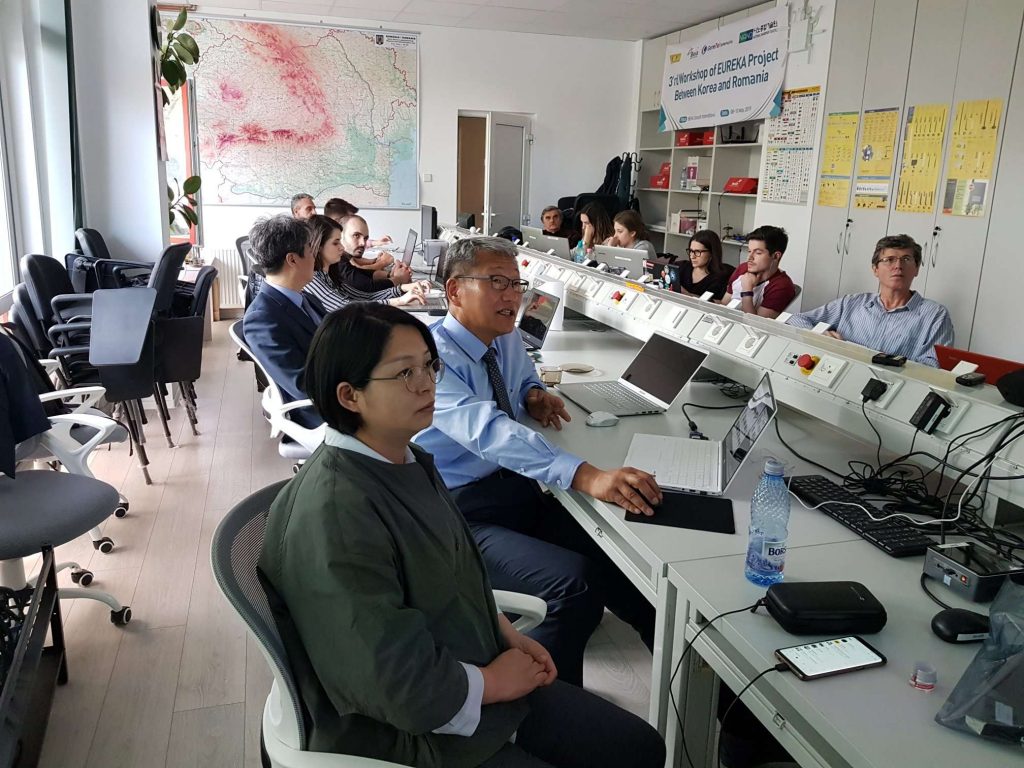
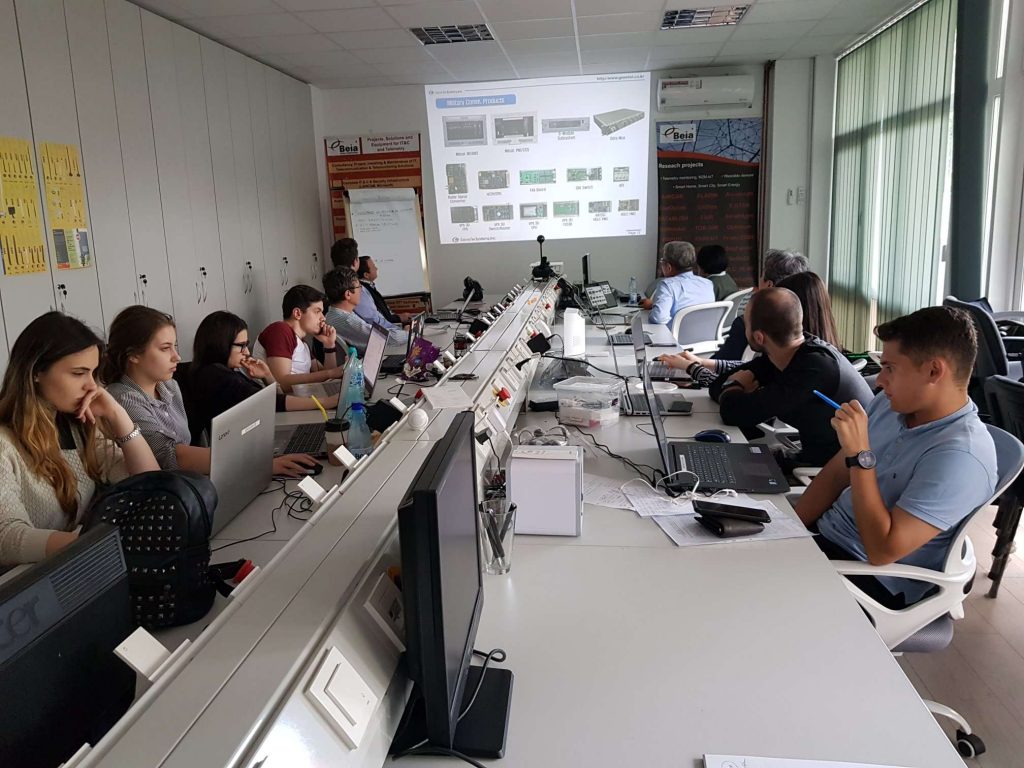
BEIA Consult hosted the 3rd Workshop of EUREKA Project (VLC/IR-RF ) between Korea and Romania on 8-10 May 2019 in Bucharest, Romania.



Authors: Robin Amsters, Nobby Stevens
With the rise of solid-state lighting, wireless positioning based on visible light is becoming more appealing. However, current visible light positioning systems require additional hardware at the transmitter end in order to modulate the light intensity. A receiver demultiplexes the combined signal from multiple sources into its components, which are then used by the positioning algorithm. This paper investigates the possibility of using unmodulated visible light for mobile robot positioning. Less hardware is required, consequently, cost and complexity are much lower. Position estimation is achieved by modeling the received signal strength inside a room, which is used as input for an Iterated Extended Kalman filter. We show that the proposed approach can achieve decimeter level accuracy in a simulation environment. Even with imperfect calibration, the total positioning error usually remains below 0.5 m. Positioning errors due to the blocking of the receiver can be mitigated by employing an innovation magnitude bounds test. We also show that by employing multiple receivers, accuracy and robustness can be further improved.
Authors: Nobby Stevens, Heidi Steendam
In this work, a set of general expressions taking into account the impact of transmitter and receiver tilt invisible light positioning on the channel gain is elaborated. A rigorous approach involving Euler rotations results in a compact expression for the modified channel gain that can be interpreted graphically. The relative modification of this gain is numerically evaluated for a number of representative configurations. A first-order approximation in case of small tilt angles leads to a number of interesting conclusions that can be utilized directly when applying received signal strength visible light positioning.
Authors: Willem Raes, David Plets, Lieven De Strycker, Nobby Stevens
In this work, the experimental evaluation of the distance estimation variance is executed for received signal strength based visible light positioning. It is shown that based on the signal to noise ratio at the matched filter output, an accurate determination of the precision is achieved. In order to suppressed ambient light which contains no information regarding the distance between the LED and the receiver, matched filtering with the dc-balanced part of the transmitted signal is required. As a consequence, the theoretical lower bound for the precision can not be achieved.
This activity will be focused on the detailed description of all the components that are part of the VLC/ IR-RF communication system, including development boards, sensors, LEDs and photodiodes.
Activity III.1 – Context analysis for sensors involved in the architecture of the communication system
In this subchapter, there will be provided a brief description of the VLC/ IR-RF hybrid communication architecture, whose primary purpose was detailed in the previous stage of the project, along with a complete set of sensors that were implemented within the laboratory test bench,
Activity III.2 – Development of the communication solution for low power devices
Within this activity, the attention will be focused on the technical presentation of the current test bench along with the results that were observed during the experiments. Moreover, to achieve the proposed goal and to obtain the most accurate results, professional measurement tools were chosen to analyze the performance of the VLC / IR-RF hybrid communication system. In this case, the information coming from the sensing modules was carried via the VLC communication protocols.
Activity III.3 – Methods for data processing
This activity will be focused on how to export the data coming from the VLC components that were presented in the previous activity. Therefore, three popular scenarios will be analyzed as follows:
-MQTT Client – Grafana – Arduino;
-LabVIEW Client – Arduino;
-Arduino Client – Firebase – Android.
Activity II.1 – Use cases
Activity II.2 – The hybrid communication system design for small and medium enterprises
This activity aims to describe the primary use cases of the VLC technology. There will be studied in detail the main events that were performed in this field. In the end, the best optical communication systems will be described. Moreover, this stage aims to describe de used case proposed by BEIA Consult International which focuses on the introduction on the market of a new hybrid communication system.

A Novel Multi-Industrial Nano Control Unit based on Thermal Imaging that aims to develop a novel type uncooled of low-cost thermal vision camera sensor and offer it to the consumer and automotive markets.
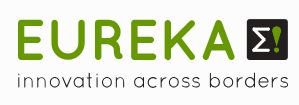
The main objective of the team project is to gain an effective approach for different healthcare applications by combining smart home technology with healthcare technology based on thermography capable of monitoring vital signs and activities of daily living (adl)
Korean partners NNFC, Crepas and GeneTel attended the 2nd Workshop of EUREKA Project in Romania at BEIA in Bucharest 11-15 September 2018 and visited ICPE-CA.
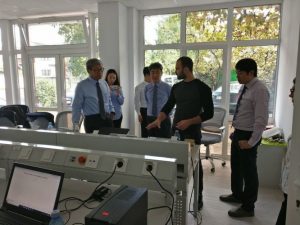
On the first day of the meeting, there were discussions on the system developed by BEIA Consult. A state of the art analysis of the hybrid system emphasized that due to technical expertise, our company will contribute to the development, testing and successful implementation of large-scale VLC-IR / RF hybrid system communications.
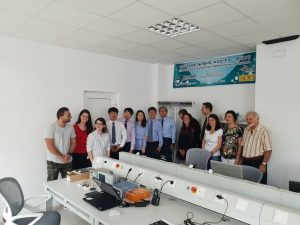
CREPAS made a presentation on entitled “Hybrid VLC/IR-RF Communication for Smart Space Based on Multi-Functional Thermal Image Sensor Module” where they presented an overview of the hybrid communication system based on LED sources and an optical communication channel.

There were some discussions that involved small beacons that can provide information regarding the position.
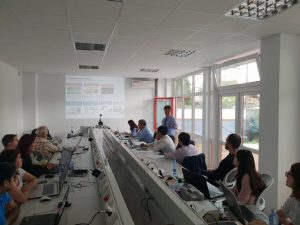
GeneTel Systems made a presentation called Interworking Specification where a hybrid VLC/IR-RF low sensor node interworking and a network interface.
Have you ever imagined a world where every light could connect you to the internet?
The demand of tomorrow can be met using the LiFi technology.
Learn more at: https://t.co/G1km56DJKh pic.twitter.com/rgHctjdawk— pureLiFi (@purelifi) July 26, 2018